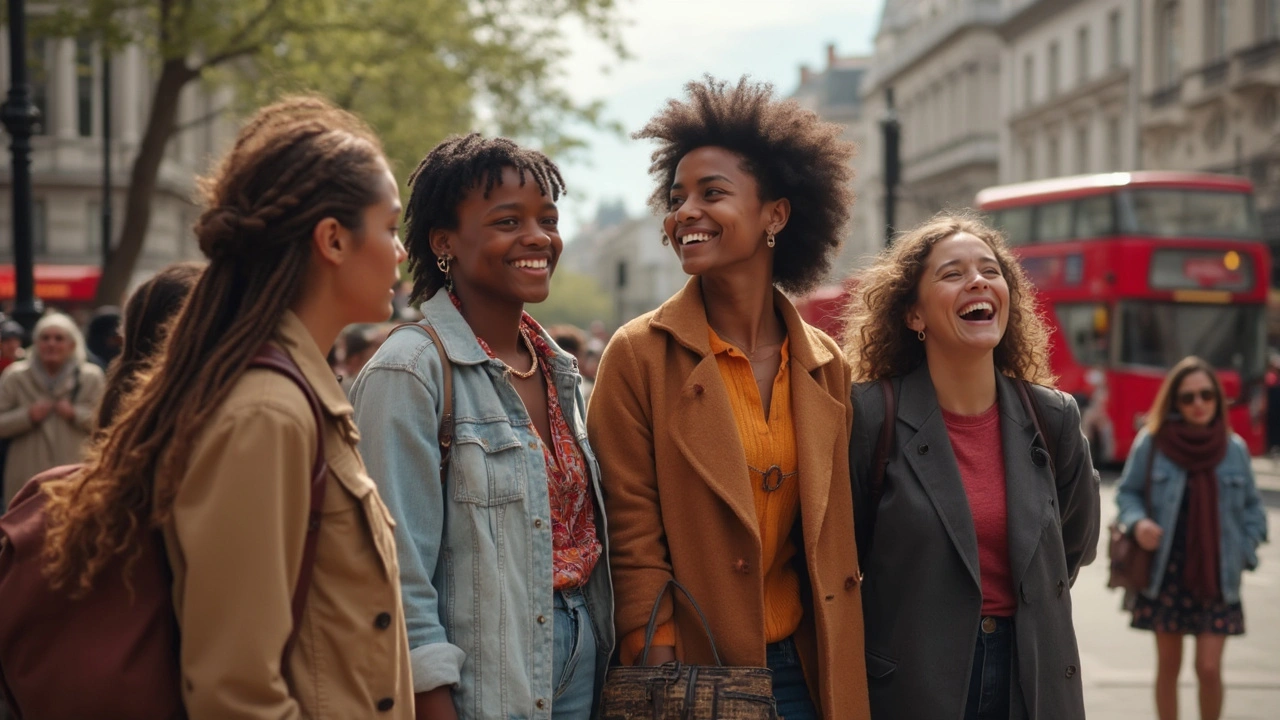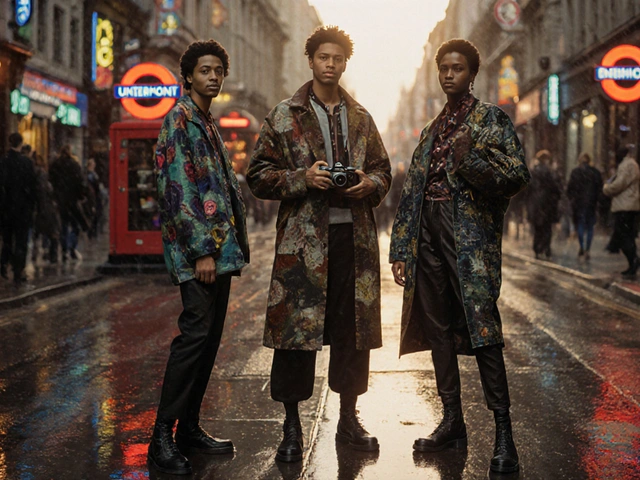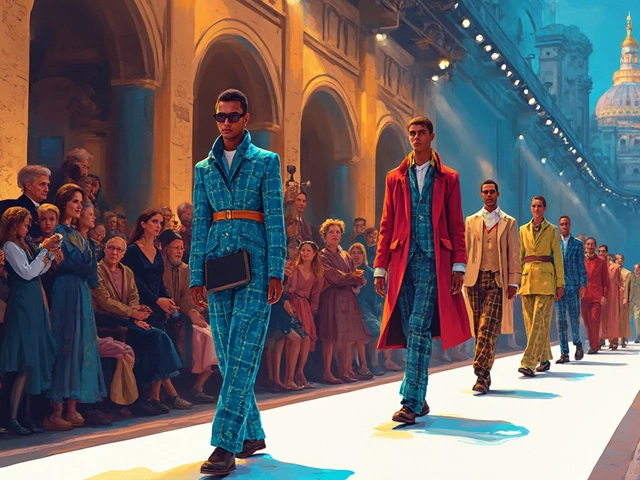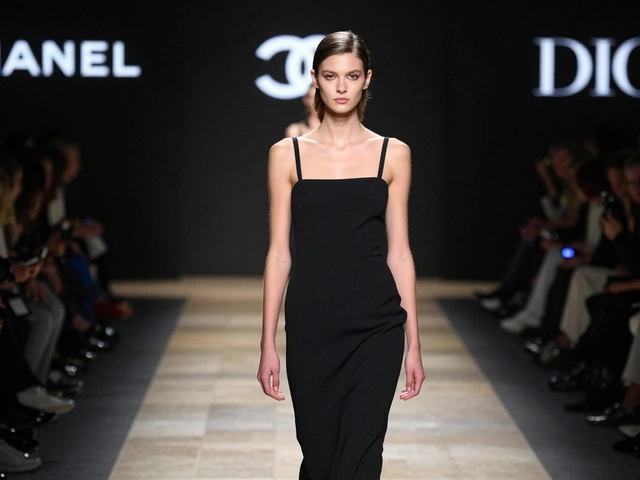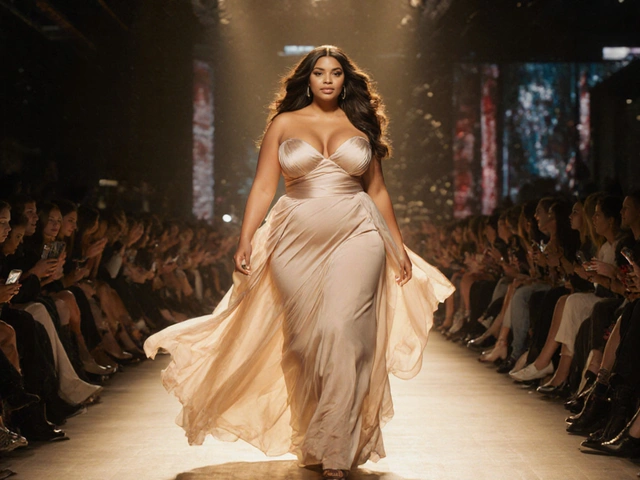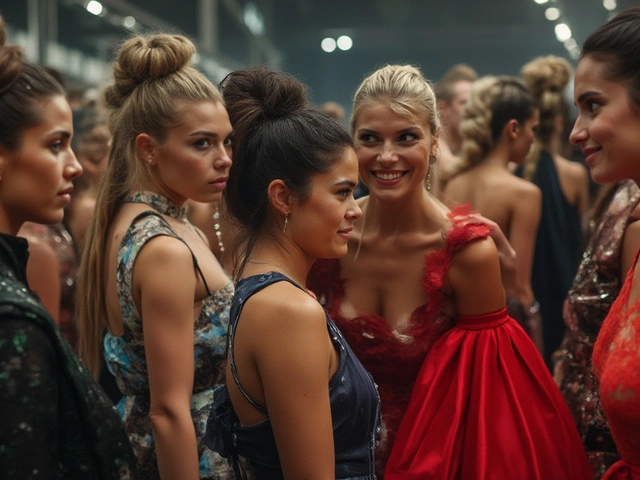Most people think of super-tall, extra-skinny women strutting down runways when they hear 'female model.' That image isn’t just old—it’s been knocked down and rebuilt. Models today are getting cast for who they really are, not just the look someone decided was 'best' decades ago. That opens a lot of doors, but it also means there’s way more pressure to be real and relatable.
If you’re curious about how to break in, here’s the bottom line: brands want models who feel like real people now. Don’t worry if you’re not stick-thin or don’t have perfect skin. These days, freckles, scars, curves, and unique looks are badges you can wear proudly. You don’t even have to fly to New York or Paris to get noticed—some of the biggest careers started with a smartphone and honesty on Instagram.
Stick around and I’ll share some wild facts, some behind-the-scenes tricks, and useful tips—whether you’re just admiring from afar or thinking, 'wait, could this be me?'
- Old-School Runways: The Original Mold
- Shifting Standards: When Real Beat Perfect
- Instagram & TikTok: Modeling Gets a Makeover
- What’s Next? Your Face, Your Story
Old-School Runways: The Original Mold
Back in the day, the modeling industry had a pretty strict idea of what a "female model" was supposed to look like. You needed to be super tall—think 5'9" and up—and ridiculously skinny. There were rules about everything: weight, measurements, even shoe size. Fashion giants like Prada and Chanel would only cast girls who fit a tiny range, with 34-24-34 inches often seen as the magic numbers. Diversity? Not really part of the plan.
The late 1980s and 1990s saw the rise of the “supermodel.” Names like Naomi Campbell, Cindy Crawford, and Linda Evangelista dominated, but even then, all the big stars looked pretty similar when it came to body shape and style. If you didn’t fit the mold, you probably never got to walk the runway. People in the industry would actually tell girls to lose weight or change their hair, even when they were already at the ideal size.
This obsession with a cookie-cutter look came at a cost. Research in the early 2000s found that more than 70% of female models said they felt extreme pressure about their appearance. The conversation about eating disorders in modeling really picked up around this time, with several exposés and documentaries making headlines.
Check out how tight the standards were by the numbers:
| Runway Requirement | Typical Range (1990s) |
|---|---|
| Height | 5'9" - 6'0" |
| Dress Size | 2 - 4 (US) |
| Bust/Waist/Hips (inches) | 34-24-34 |
| Age at Debut | 14 - 17 |
One thing’s for sure—female models got their start in an environment where sameness was expected. So much has changed since then. The old-school runway was exclusive by design, but it sparked the push for something a whole lot more real—and a lot more relatable for the rest of us.
Shifting Standards: When Real Beat Perfect
This is where things really changed for female models. Back in the 1990s and early 2000s, fashion shows demanded models be super tall, size zero, and flawless. That left a lot of people feeling left out and pressured to fit a single narrow ideal. But cracks in that system started showing. In 2012, Vogue pledged not to use models who were underweight, a move that turned heads. France even passed laws requiring models to show medical proof they’re healthy before working. The old 'perfection' rulebook? It started to get tossed out the window.
Body positivity events and movements gained steam online. The #effyourbeautystandards campaign, started by model Tess Holliday in 2013, went viral because people were ready for real, not just perfect. Brands started using models with visible disabilities, plus-size bodies, and natural features like gaps in teeth or vitiligo. Aerie, the underwear brand, stopped retouching photos in 2014—and their sales jumped.
If you want to stand out now, showing your quirks is the move. Agencies look for bold personalities and unique features more than measurements. They want confidence, not copies. Here’s what helps today:
- Show natural skin—acne, moles, freckles, all of it. No Photoshop needed.
- Share your story: Brands love models who talk honestly about their backgrounds.
- Embrace personal style that highlights what makes you, you.
The biggest shift? Modeling isn’t just about looks anymore. You need a point of view, a cause you believe in, or a community you connect with. Real beats perfect every time in 2025, and that’s not just hype—it’s how money moves and trends stick now.
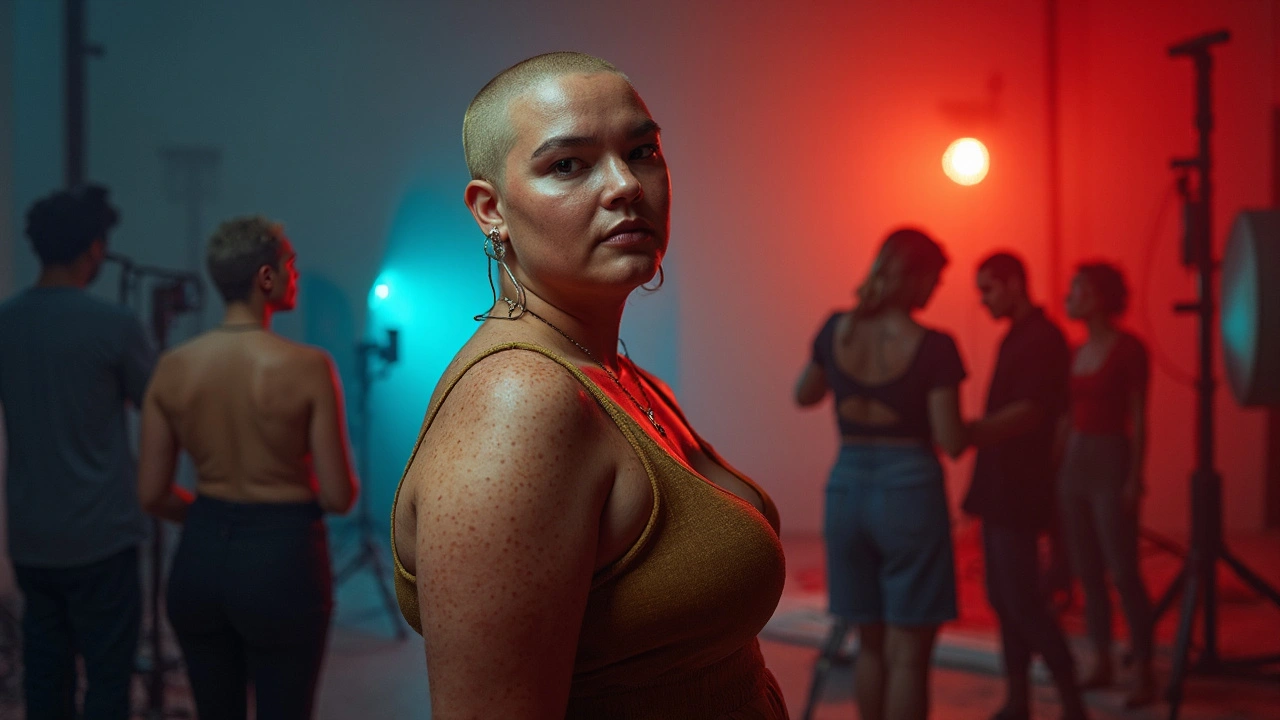
Instagram & TikTok: Modeling Gets a Makeover
Social media blew up the old blueprint for female models. Remember when you needed an agency just to get your foot in the door? Not anymore. With Instagram and TikTok, you can reach millions without ever leaving your hometown. All you need is a phone, a bit of creativity, and the guts to put yourself out there.
Here's a wild fact: by 2023, over 65% of new modeling contracts for people under 25 started with a social media discovery. That’s brands like Savage X Fenty and Glossier finding fresh faces on their feeds, sometimes just because a short video got a lot of likes. TikTok has even birthed micro-influencers—models with a few thousand followers who still land paid gigs just for having an authentic vibe.
It’s not always about flawless selfies either. Followers care more about personality and day-to-day life than perfectly staged shots. Brands know this, so they scout people who show up as their real selves. If you scroll through your feed, you’re bound to spot models posting what actually happens behind the scenes—the goofy takes, the outfit fails, the unfiltered skin.
- Consistency matters more than expensive tech. Regular posting beats fancy equipment.
- Use hashtags that actually fit your look or niche, not just #model every time.
- Engage with your audience—reply to comments, ask questions, and stay real.
- It’s fine to post pro photos, but don’t be afraid to snap and share raw, in-the-moment selfies too.
If you want numbers, check out this quick breakdown of how social media is flipping the female models scene:
| Platform | % New Modeling Contracts (2024) | Average Audience Size Needed |
|---|---|---|
| 38% | ~10,000 followers | |
| TikTok | 27% | ~7,000 followers |
| Traditional Agencies | 35% | Not follower-based |
So if you’re hoping to go pro, don’t sweat trying to look perfect 24/7. There's an audience for real. Start sharing your story in your own way—chances are, someone out there wants to see exactly what you bring to the table.
What’s Next? Your Face, Your Story
This isn’t just about what’s cool now. The modeling industry keeps chugging toward something way more personal. Models aren’t just hangers for clothes anymore—they’re storytellers, activists, and business owners. That’s why agencies and brands want to see your story, not just your pose.
If you look at ad campaigns from the last three years, you’ll spot way more firsts: plus-size models in major jeans ads, models with disabilities front and center, and faces from every background. Brands know people want to see themselves represented. In 2023, Adidas blew up on social media after showing models with visible scars and no retouching—it scored the highest engagement for their women's swimwear ever.
Data backs it up. Check out these stats about recent changes in female models casting:
| Year | Plus-size Models in Major Shows (%) | Racially Diverse Models (%) | Openly LGBTQ+ Models in Campaigns (#) |
|---|---|---|---|
| 2015 | 2 | 17 | 3 |
| 2019 | 14 | 41 | 12 |
| 2024 | 31 | 55 | 28 |
The message? You don’t need to fit a perfect box. You just need to bring your actual self. Here’s what helps make your face—and your story—stand out in this new era:
- Get real online. Agencies actually check out your socials, so don’t stress about looking flawless. They want to see your personality, interests, and things that make you unique.
- Build skills, not just your portfolio. Learn how to pose, try acting classes, and get comfortable in front of the camera. New models who can tell a story with their face and body get noticed fast.
- Work with brands that match your values. Don’t try to be someone you’re not. The best gigs come when you connect with companies that share your vibe, whether it’s beauty, sports, or even activism.
- Network—but not just offline. The biggest castings sometimes happen on Instagram Lives or TikTok. Interact with brands and other models, and you might score your shot.
Your story is your best angle. The industry’s wide open, and there’s no one way to be a successful model any more. Just show up as yourself. That’s what stands out today.
